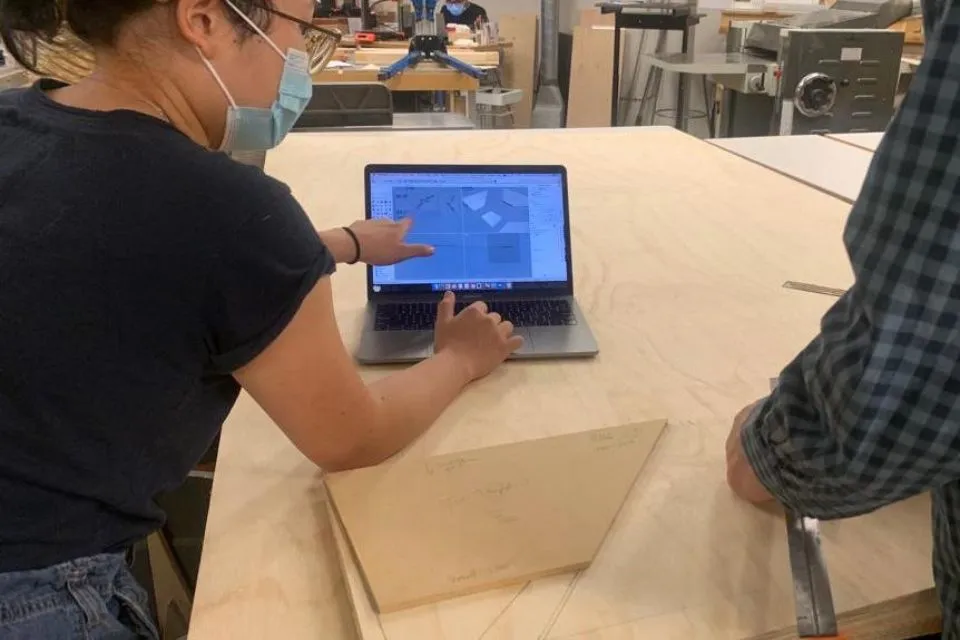“Sometimes the best response to a difficult question isn’t an answer, but another question”

Thea Johannus
- Degree:
- Bachelor of Design in Architecture, Landscape Architecture, and Urbanism
- Grad year: 2023
- Program:
- Campus: Vancouver
I recently graduated with an honours undergraduate degree in Design in Architecture, Landscape Architecture, and Urbanism. I began my studies at UBC in the Faculty of Science and transferred to the School of Architecture and Landscape Architecture (SALA) in my third year, right at the peak of the pandemic. While online school has been formative to my undergraduate experience, the in-person connections I have made with friends, the UBC campus and greater Vancouver landscape have been far more significant markers of the past 5 years.
During my time in the Bachelor of Design (BDES) program, I have been a member of the Design Undergraduate Society, serving as VP Academic and a member of the Health and Wellness Committee. Additionally, I worked as an Undergraduate Academic Assistant for jobs relating to Design and Engagement research, student facilities, and other projects within SALA. My curiosities are guided by the potential of hands-on building and material exploration to foster greater engagement between human and more-than-human worlds through design.
Bachelor of Design in Architecture, Landscape Architecture, and Urbanism
What has made your time at UBC memorable?
I was given the opportunity to join a design-build team that partnered with the Powell Street Festival Society (PSFS) on a project called Fuki no Mizu. The project is a set of interactive pavilions that celebrates Japanese-Canadian culture and begins to address water inequalities amongst communities in Vancouver’s Downtown Eastside, while providing drinking and misting water during the annual Powell Street Festival.
Our team included members from SALA (faculty, workshop crew, and students from the BDES, MArch, and MLA programs) and our community peers (PSFS representatives, DTES community members, and mentors and practitioners from local firms). The wide range of knowledge from our team brought much success in facing the comprehensive challenges of the project. More importantly, our joint willingness to learn from, and with, each other helped us face uncertainty with enthusiasm.
I was able to learn how to use hand-fabrication tools, build with wood, and even how to work with plumbing! I am beyond grateful for each person on this team for being amazingly patient, and insightful teachers. This experience continues to motivate my curiosities in using hand-building to promote engagement with communities and landscapes.
What advice would you give incoming BDES students?
One of my design professors defined creativity as the ability to see in one thing, many things. Your creativity, and empathy, as a designer will be strengthened the more you are able to welcome uncertainty and learn from people and places unfamiliar to you. Take the initiative to explore disciplines beyond design that will inform your creative process as it develops throughout this degree and motivate you to expand your own definitions of design practice.
I would also say to remind yourself often that, while your work is an outlet to be self-expressive and connect to your community, your work does not define who you are as a person. Be patient with yourself and lean on your peers as you journey through design school together. They will become your greatest teachers, cheerleaders, and support network.
How did your studies in the Faculty of Applied Science prepare you for the future of work?
There is now a great urgency to design just, equitable, and inclusive futures that empower, not the minds of a select few, but the efforts of diverse collaborators. Designers, within these interdisciplinary dynamics, will be well equipped to act as mediators of intersectional discourse. My studies have given me the tools of mediation - to be holistically considerate and to practice patience in the design process. My instructors, mentors, and peers have shown me that the urgency required to face social, cultural, and ecological challenges within design fields also begets the necessity to slow down - this urgency does not neglect the need to also design with thoughtfulness, attentiveness, and empathy.




